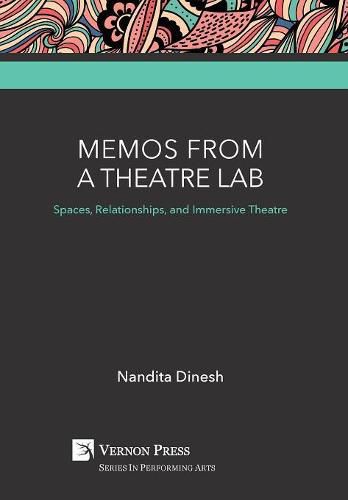Readings Newsletter
Become a Readings Member to make your shopping experience even easier.
Sign in or sign up for free!
You’re not far away from qualifying for FREE standard shipping within Australia
You’ve qualified for FREE standard shipping within Australia
The cart is loading…






This title is printed to order. This book may have been self-published. If so, we cannot guarantee the quality of the content. In the main most books will have gone through the editing process however some may not. We therefore suggest that you be aware of this before ordering this book. If in doubt check either the author or publisher’s details as we are unable to accept any returns unless they are faulty. Please contact us if you have any questions.
Drawing from Dinesh’s findings in Memos from a Theatre Lab: Exploring What Immersive Theatre Does , this practice-based-research project - second in an envisioned series of Immersive Theatre experiments in Dinesh’s theatre laboratory – considers the potential impact of pre-existing relationships between actors, spectators, and performance spaces when using immersive theatrical aesthetics toward educational and/or socio-political objectives.
Memos from a Theatre Lab: Spaces, Relationships and Immersive Theatre explores the following questions: When audience members do not know the actors outside the milieu of a theatrical performance, does an immersive form hold different implications than if performers and spectators know each other in ‘real life’? When actors and spectators are strangers to each other, are performers more or less likely to judge the responses that are given to them within an immersive scenario? What kinds of immersive situations, especially in Applied Theatre interventions, might benefit from the presence or absence of a pre-existing relationship between performers, audience members, and the spaces in which these experiences occur?
In describing the processes involved in: designing such an experiment, crafting the relevant immersive performances, and gathering/ analysing data from actors and spectators, this book puts forward strategies for students, researchers, and practitioners who seek to better understand the form of Immersive Theatre.
$9.00 standard shipping within Australia
FREE standard shipping within Australia for orders over $100.00
Express & International shipping calculated at checkout
This title is printed to order. This book may have been self-published. If so, we cannot guarantee the quality of the content. In the main most books will have gone through the editing process however some may not. We therefore suggest that you be aware of this before ordering this book. If in doubt check either the author or publisher’s details as we are unable to accept any returns unless they are faulty. Please contact us if you have any questions.
Drawing from Dinesh’s findings in Memos from a Theatre Lab: Exploring What Immersive Theatre Does , this practice-based-research project - second in an envisioned series of Immersive Theatre experiments in Dinesh’s theatre laboratory – considers the potential impact of pre-existing relationships between actors, spectators, and performance spaces when using immersive theatrical aesthetics toward educational and/or socio-political objectives.
Memos from a Theatre Lab: Spaces, Relationships and Immersive Theatre explores the following questions: When audience members do not know the actors outside the milieu of a theatrical performance, does an immersive form hold different implications than if performers and spectators know each other in ‘real life’? When actors and spectators are strangers to each other, are performers more or less likely to judge the responses that are given to them within an immersive scenario? What kinds of immersive situations, especially in Applied Theatre interventions, might benefit from the presence or absence of a pre-existing relationship between performers, audience members, and the spaces in which these experiences occur?
In describing the processes involved in: designing such an experiment, crafting the relevant immersive performances, and gathering/ analysing data from actors and spectators, this book puts forward strategies for students, researchers, and practitioners who seek to better understand the form of Immersive Theatre.